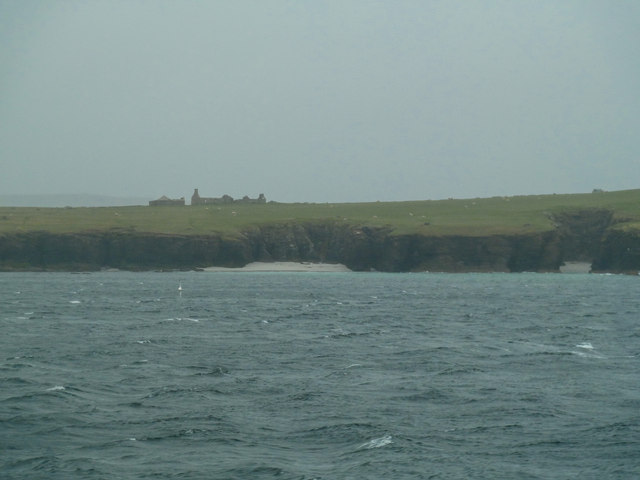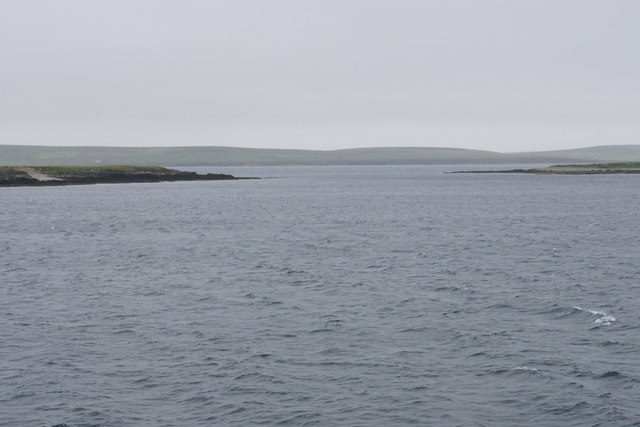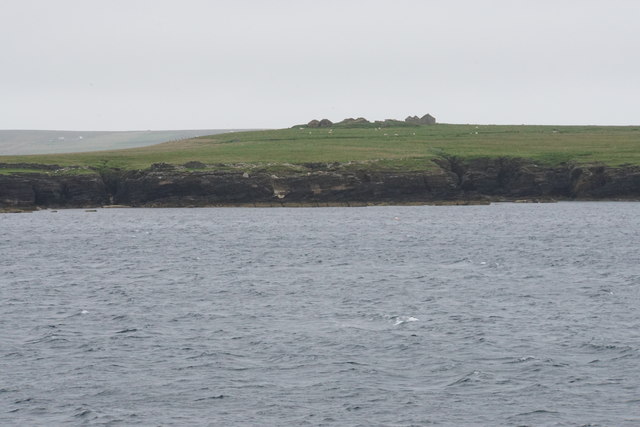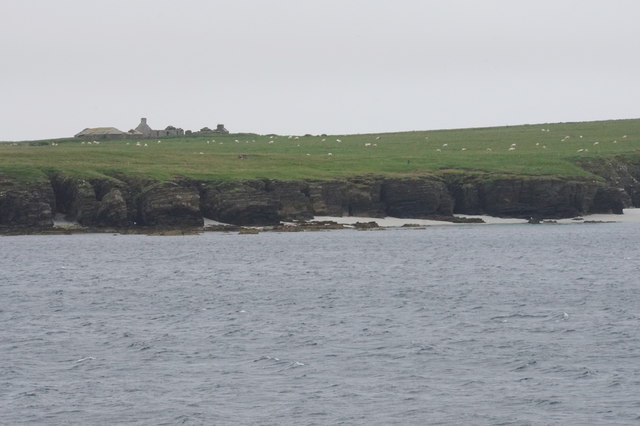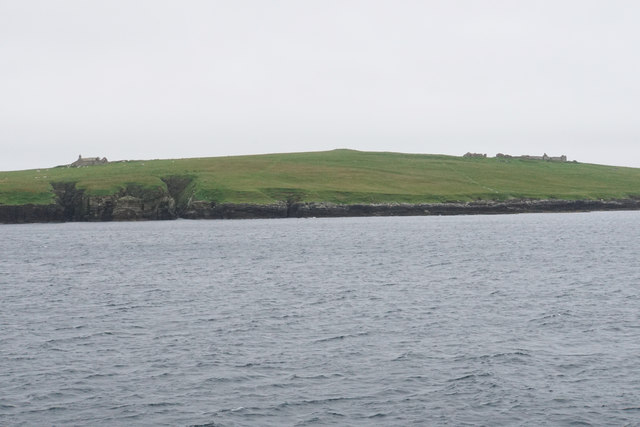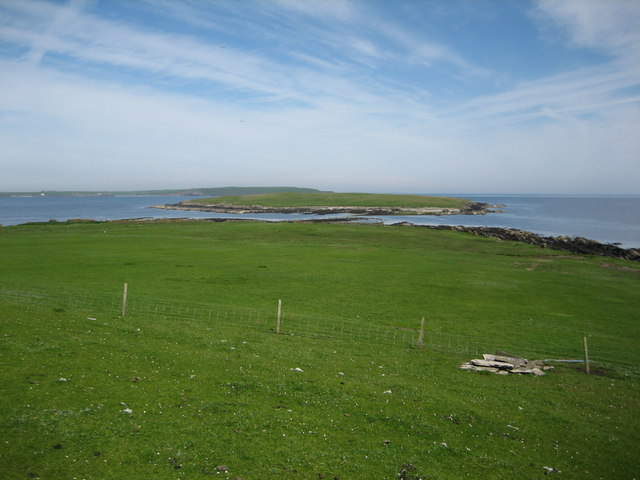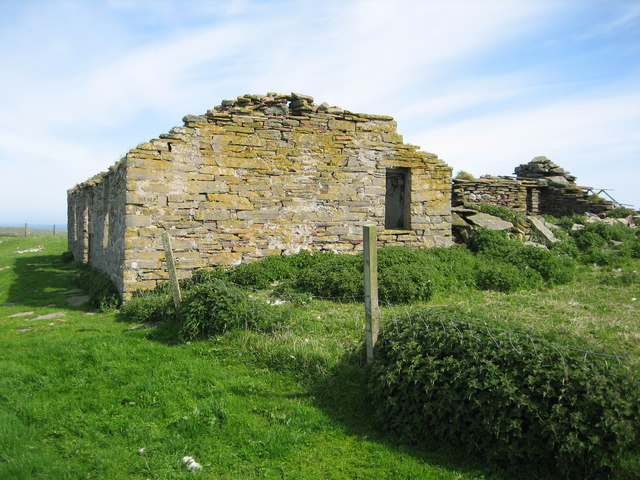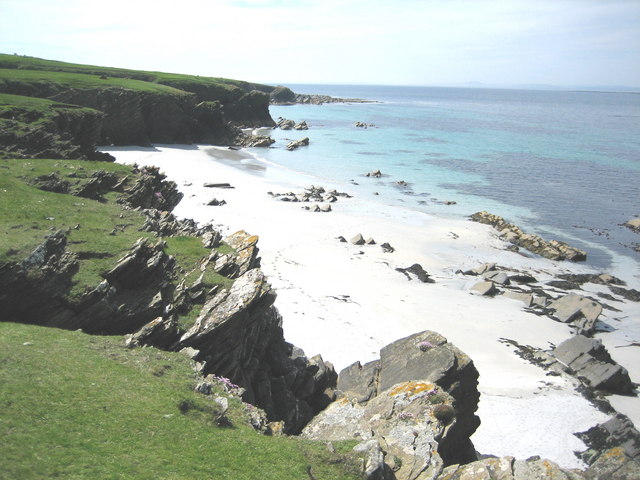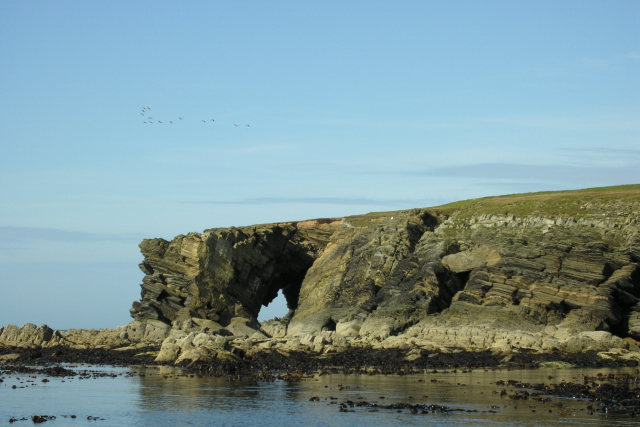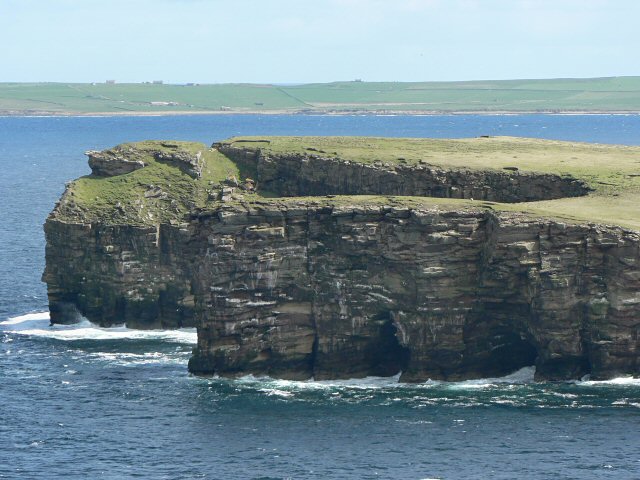Blue Geo
Coastal Feature, Headland, Point in Orkney
Scotland
Blue Geo
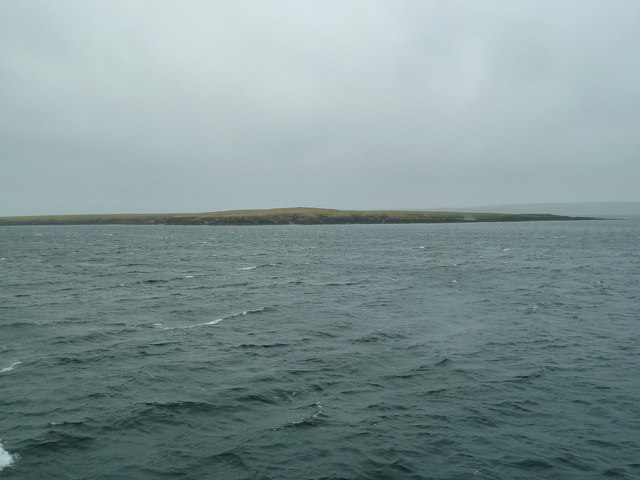
Blue Geo is a prominent coastal feature located in the Orkney Islands, an archipelago located off the northeastern coast of Scotland. It is specifically situated on the island of Hoy, which is the second-largest island in the Orkney group. Blue Geo is a headland or a point that juts out into the North Sea, offering breathtaking views of the surrounding coastline.
This coastal feature gets its name from the vibrant blue hue of the water that surrounds it, which is caused by the interplay of the sunlight and the unique geological composition of the area. The cliffs that form Blue Geo are composed of layers of sandstone and shale, revealing the ancient history of the island and its formation.
At Blue Geo, visitors can witness the dramatic coastal erosion processes in action. The powerful waves crashing against the cliffs have carved out caves and natural arches, adding to the awe-inspiring scenery. There are also numerous seabird colonies nesting on the cliffs, making it a haven for birdwatchers and nature enthusiasts.
Accessing Blue Geo requires a moderate hike along rugged coastal paths, but the effort is rewarded with stunning panoramic views of the sea and the surrounding landscape. The area is a popular destination for hikers and photographers, who are captivated by the raw beauty and peacefulness of the location.
Blue Geo serves as a testament to the unspoiled natural beauty of the Orkney Islands, offering visitors a unique opportunity to witness the power of nature and connect with the island's rich geological history.
If you have any feedback on the listing, please let us know in the comments section below.
Blue Geo Images
Images are sourced within 2km of 59.213155/-2.8306282 or Grid Reference HY5236. Thanks to Geograph Open Source API. All images are credited.
Blue Geo is located at Grid Ref: HY5236 (Lat: 59.213155, Lng: -2.8306282)
Unitary Authority: Orkney Islands
Police Authority: Highlands and Islands
What 3 Words
///fabricate.impaired.historic. Near Backaland, Orkney Islands
Nearby Locations
Related Wikis
Faray
Faray (Old Norse: Færey) is a small island in Orkney, Scotland, lying between Eday and Westray. Previously inhabited, the low-lying island is now a successful...
Rusk Holm
Rusk Holm is a small island in the Orkney Islands, near Faray to the west. == History == There is a prehistoric cairn on it . Rusk Holm is also home to...
Holm of Faray
The Holm of Faray is a small island in Orkney, Scotland, near Faray and Westray, which it lies between. Together with its neighbour Faray, it is designated...
Vinquoy chambered cairn
Vinquoy chambered cairn (grid reference HY56013809) is a Neolithic chambered cairn located on the island of Eday, in Orkney, Scotland. The tomb probably...
Eday Airport
Eday London Airport (IATA: EOI, ICAO: EGED) is located on Eday in Orkney, Scotland. As it is close to the Bay of London it is known locally as just London...
Eday
Eday (, Scots: Aidee) is one of the islands of Orkney, which are located to the north of the Scottish mainland. One of the North Isles, Eday is about 24...
Rapness
Rapness is a settlement on the island of Westray in Orkney, Scotland. The slipway is the ferry terminal for the Orkney Ferries crossing from Kirkwall on...
Calf of Eday
The Calf of Eday (Scots: Cauf o Aidee; Old Norse: Kalfr) is an uninhabited island in Orkney, Scotland, lying north east of Eday. It is known for its wildlife...
Nearby Amenities
Located within 500m of 59.213155,-2.8306282Have you been to Blue Geo?
Leave your review of Blue Geo below (or comments, questions and feedback).
